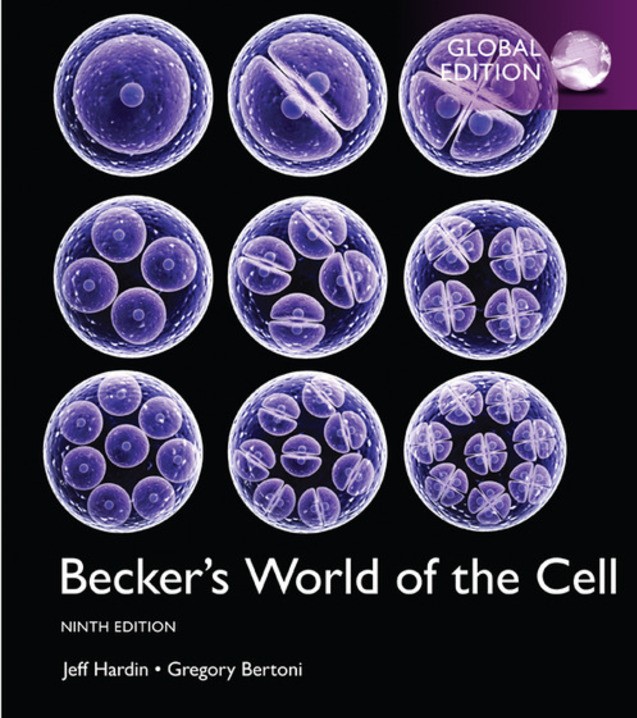
Becker's World of the Cell 9th Edition by Lewis Kleinsmith, Jeff Hardin, Gregory Paul Bertoni
Edition 9ISBN: 9780134295510
Becker's World of the Cell 9th Edition by Lewis Kleinsmith, Jeff Hardin, Gregory Paul Bertoni
Edition 9ISBN: 9780134295510 Exercise 4
1-4: QUANTITATIVE Limits of Resolution Then and Now. Based on what you learned in this chapter about the limit of resolution of a light microscope, answer each of the following questions. Assume that the unaided human eye has a limit of resolution of about 0.25 mm and that a modern light microscope has a useful magnification of about 1000×.
(a)Define limit of resolution in your own words. What was the limit of resolution of Hooke's microscope What about van Leeuwenhoek's microscope
(b)What are the approximate dimensions of the smallest structure that Hooke would have been able to observe with his microscope Would he have been able to see any of the structures shown in Figure 1-3a If so, which ones And if not, why not
(c)What are the approximate dimensions of the smallest structure that van Leeuwenhoek would have been able to observe with his microscope Would he have been able to see any of the structures shown in Figure 1-3a If so, which ones And if not, why not
(d)What are the approximate dimensions of the smallest structure that a contemporary cell biologist should be able to observe with a modern light microscope
(e)Consider the eight structures shown in Figure 1-3a and 1-3b. Which of these structures would both Hooke and van Leeuwenhoek have been able to see with their respective microscopes Which, if any, would van Leeuwenhoek have been able to see that Hooke could not Explain your reasoning. Which, if any, that neither Hooke nor van Leeuwenhoek could see would a contemporary cell biologist be able to see using a modern light microscope
Reference Figure 1-3a:

Reference Figure 1-3b:

(a)Define limit of resolution in your own words. What was the limit of resolution of Hooke's microscope What about van Leeuwenhoek's microscope
(b)What are the approximate dimensions of the smallest structure that Hooke would have been able to observe with his microscope Would he have been able to see any of the structures shown in Figure 1-3a If so, which ones And if not, why not
(c)What are the approximate dimensions of the smallest structure that van Leeuwenhoek would have been able to observe with his microscope Would he have been able to see any of the structures shown in Figure 1-3a If so, which ones And if not, why not
(d)What are the approximate dimensions of the smallest structure that a contemporary cell biologist should be able to observe with a modern light microscope
(e)Consider the eight structures shown in Figure 1-3a and 1-3b. Which of these structures would both Hooke and van Leeuwenhoek have been able to see with their respective microscopes Which, if any, would van Leeuwenhoek have been able to see that Hooke could not Explain your reasoning. Which, if any, that neither Hooke nor van Leeuwenhoek could see would a contemporary cell biologist be able to see using a modern light microscope
Reference Figure 1-3a:

Reference Figure 1-3b:

Explanation
(a)
The limit of resolution is a measure...
Becker's World of the Cell 9th Edition by Lewis Kleinsmith, Jeff Hardin, Gregory Paul Bertoni
Why don’t you like this exercise?
Other Minimum 8 character and maximum 255 character
Character 255


